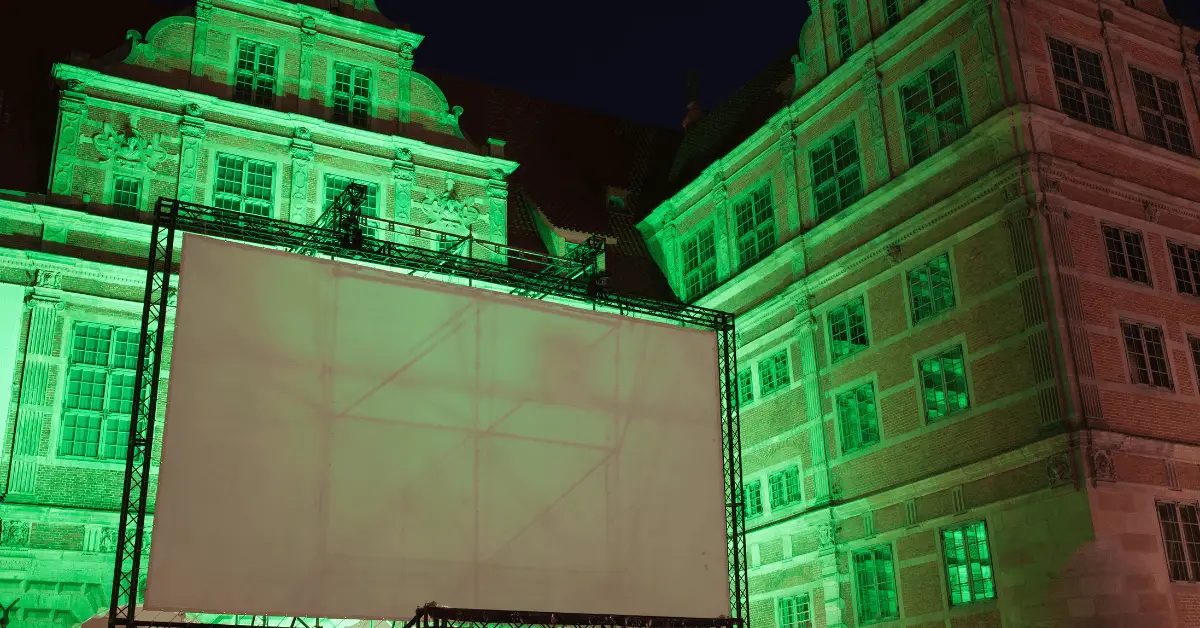Setting up a home theater is an exciting endeavor, and one of the essential components is the projector screen. When planning the placement of your manual pull-down projector screen, you may wonder whether it’s a good idea to position it in front of a window. While it might seem convenient to utilize the natural light during the day or enjoy the view outside, there are important factors to consider. In this article, we will explore the pros and cons of installing a manual pull-down projector screen in front of a window. By understanding the potential benefits and drawbacks, you can make an informed decision that best suits your home theater setup and viewing preferences.
Table of Contents
Manual Pull Down Projector Screen in Front of Window: Good or Bad Idea?
Natural Light vs. Image Quality:
One of the primary advantages of placing a manual pull-down projector screen in front of a window is the potential for utilizing natural light. During the daytime, the sunlight can enhance the brightness of the projected image, reducing the need for artificial lighting. Additionally, if you have a beautiful view outside, you can enjoy the scenery while watching movies or playing games.
However, there are significant drawbacks to consider. Natural light can cause glare and wash out the image, leading to diminished picture quality and color accuracy. Even with high-gain screens or ambient light rejecting (ALR) screens designed to combat glare, the presence of direct sunlight can still negatively impact the viewing experience. To achieve optimal image quality, it is generally recommended to minimize or control the amount of ambient light in the viewing area.
Light Control and Window Treatments:
To mitigate the negative effects of natural light, you can employ window treatments to darken the room when using the projector. Options such as blackout curtains or blinds can effectively block out sunlight and provide better light control for an improved viewing experience. However, it’s important to consider the practicality and convenience of consistently using these window treatments. If you frequently open and close the curtains or blinds, it may disrupt the viewing experience and become inconvenient over time.
Ambient Light and Contrast Ratio:
Another crucial factor to consider is the contrast ratio of the projected image. Projectors rely on the contrast between light and dark areas to create a vibrant and detailed picture. When a manual pull-down projector screen is placed in front of a window, the ambient light in the room can diminish the contrast ratio, resulting in a washed-out image. This can lead to a loss of detail in dark scenes and a generally less immersive viewing experience.
Reflections and Glare:
Placing a projector screen in front of a window increases the likelihood of reflections and glare. Sunlight or other light sources can reflect off the screen, creating distracting bright spots or shimmering effects. This can be particularly noticeable during scenes with dark backgrounds or high contrast.
Room Layout and Placement Options:
The layout of your room and the available placement options for the projector screen should also be taken into account. Placing the screen in front of a window may limit your flexibility in positioning the projector and speakers optimally. It could potentially obstruct the path of the projected light or interfere with the sound quality, affecting the overall performance of your home theater system.
Conclusion:
When contemplating the installation of a manual pull-down projector screen in front of a window, it is crucial to weigh the pros and cons. While the allure of natural light and scenic views may be tempting, it is important to acknowledge the potential drawbacks on image quality, contrast ratio, and overall viewing experience. Creating a controlled environment with minimal ambient light is generally recommended for optimal picture quality. However, if you can effectively control and block out sunlight using window treatments and prioritize the experience of enjoying both movies and the outside view, this setup may be worth exploring. Ultimately, understanding the compromises and considering your personal preferences will help you make an informed decision that aligns with your home theater aspirations.

